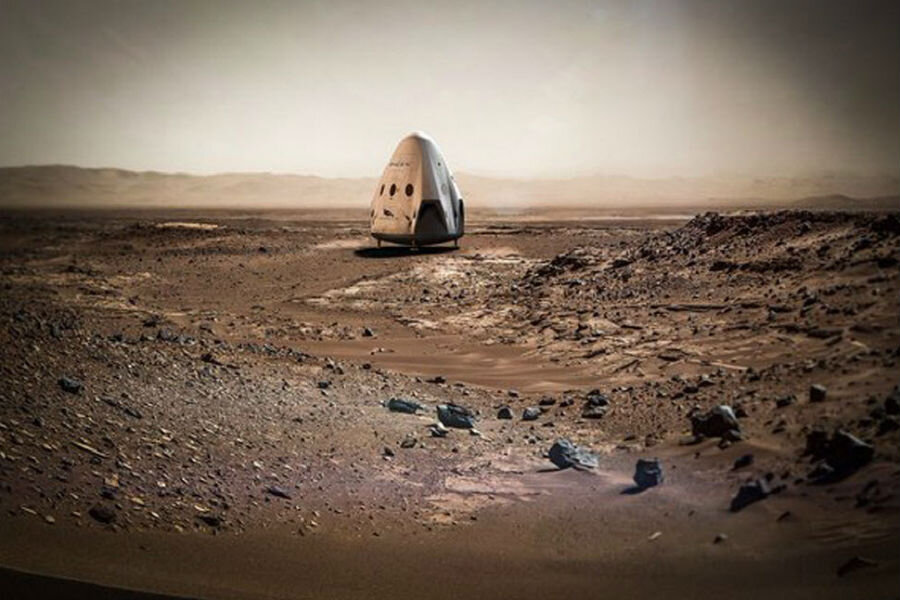SpaceX's Elon Musk outlines plans for 'cargo route to Mars'
If people are going to land on Mars in nine years, everything will have to go just according to Elon Musk's plans.
On Friday, SpaceX founder and CEO Elon Musk revealed more details of his plan to achieve a human mission to Mars by 2025.
Musk said in an interview with The Washington Post that just as explorers braved the journey to the New World centuries ago, there are people today who want to be the pioneers who first set foot on the Red Planet, regardless of the incredible dangers involved.
But before anyone sets off on the journey, there are a series of milestones SpaceX must achieve.
Keeping SpaceX’s Mars agenda on track depends on the Falcon Heavy, the world’s most powerful operational rocket, having a successful first launch this fall, according to CNBC. The SpaceX website boasts that the Falcon Heavy can lift twice the payload of its closest competitor, at one-third the cost.
The Falcon Heavy rocket will next be used to boost the Dragon spacecraft to Mars in 2018.
“Dragon made history in 2012 when it became the first commercial spacecraft in history to deliver cargo to the International Space Station and safely return cargo to Earth, a feat previously achieved only by governments,” according to the SpaceX website.
Musk told the Post that he planned to fly at least two Falcon Heavy rockets and Dragon spacecraft loaded with experiments to Mars by 2020.
“Essentially what we’re saying is we’re establishing a cargo route to Mars,” he told the Post. “It’s a regular cargo route. You can count on it. It’s going to happen every 26 months. Like a train leaving the station.” Musk said that scientists around the world would contribute experiments to include as the cargo.
If the "cargo shipments" in 2018, 2020, and 2022 go according to plan, it would be possible to hit the highly anticipated launch window in 2024, with passengers on board who would get to Mars by 2025.
And Musk emphasized in his interview with the Post that sending a few people to Mars is not even his ultimate objective. “It’s about having an architecture that would enable the creation of a self-sustaining city on Mars with the objective of being a multi-planet species and a true space-faring civilization and one day being out there among the stars," he said.
Musk also acknowledged the high stakes of his plan in the interview. “It’s dangerous and probably people will die – and they’ll know that,” Musk told the Post. “And then they’ll pave the way, and ultimately it will be very safe to go to Mars, and it will very comfortable. But that will be many years in the future.”
Since the first human artifact reached Mars in 1971, when NASA’s Mars Lander 2 crash-landed, 43 robotics missions have headed to Mars. Only 18 successfully completed their missions. This success rate hasn't deterred NASA either; the agency also has its eye on bringing humankind to Mars.
In addition to providing technical support for the SpaceX mission, NASA is planning its own mission to Mars in 2018, to study the planet’s deep interior, hoping to gain insight into the processes that shaped that planet, and our own, more than four billion years ago.









